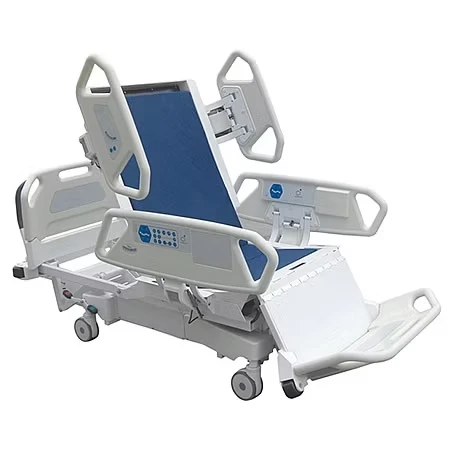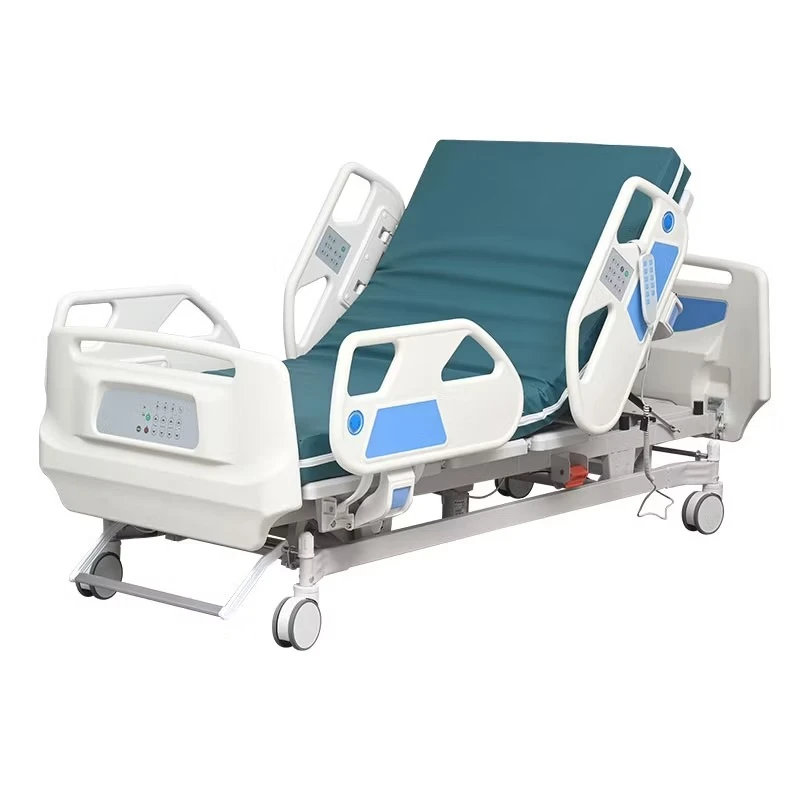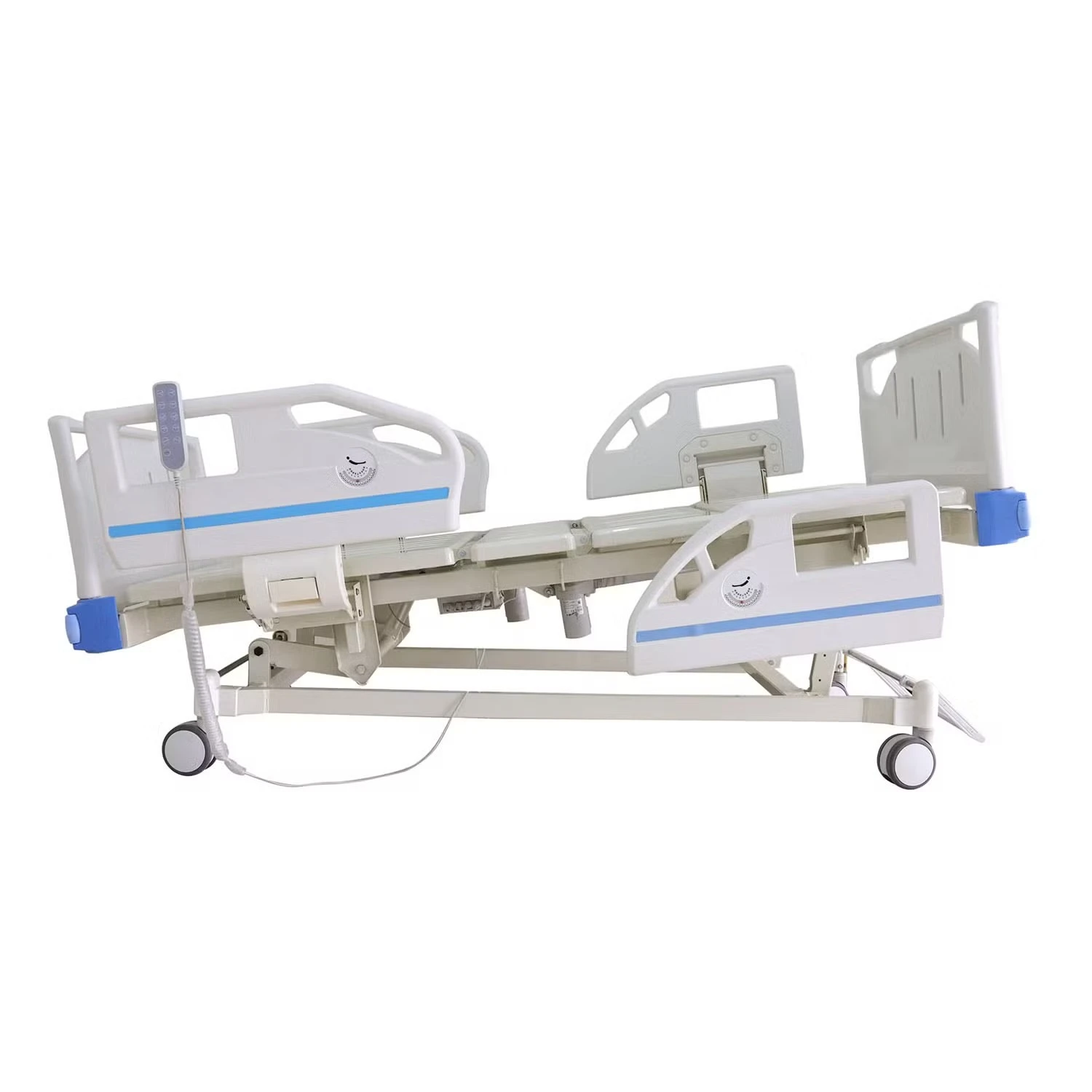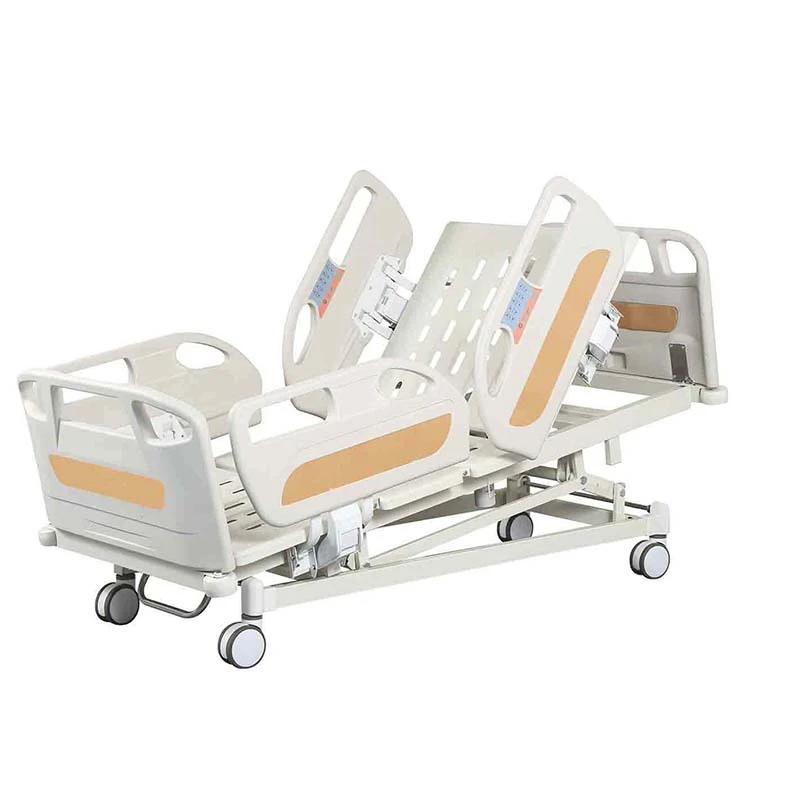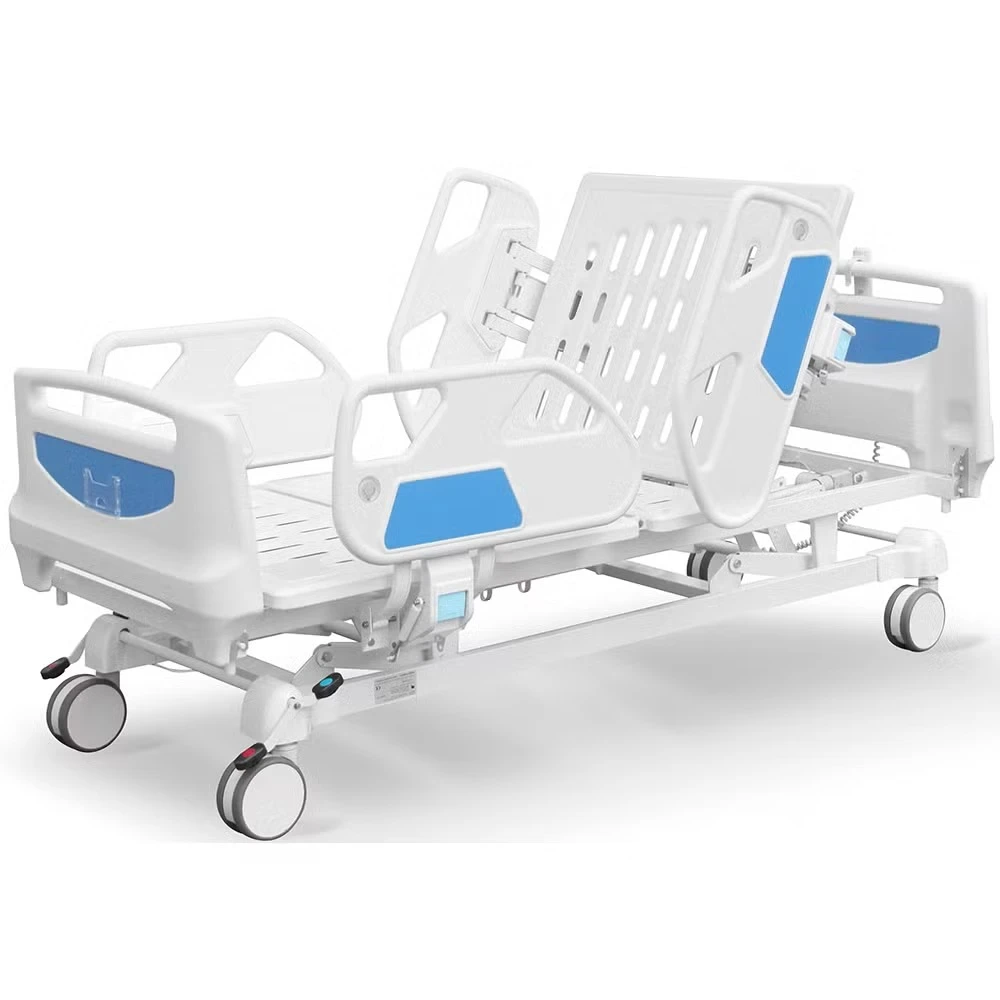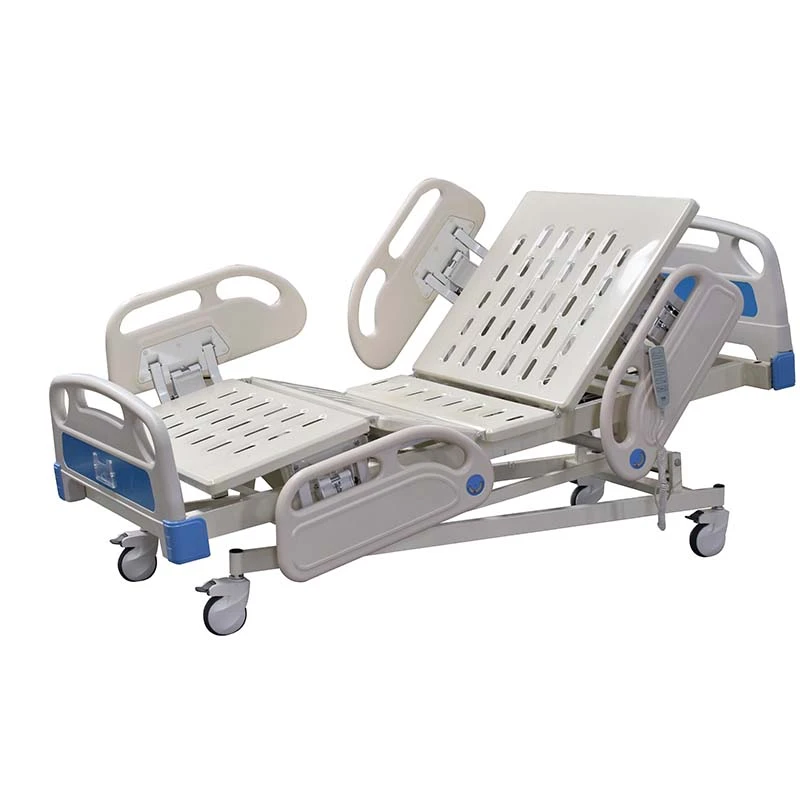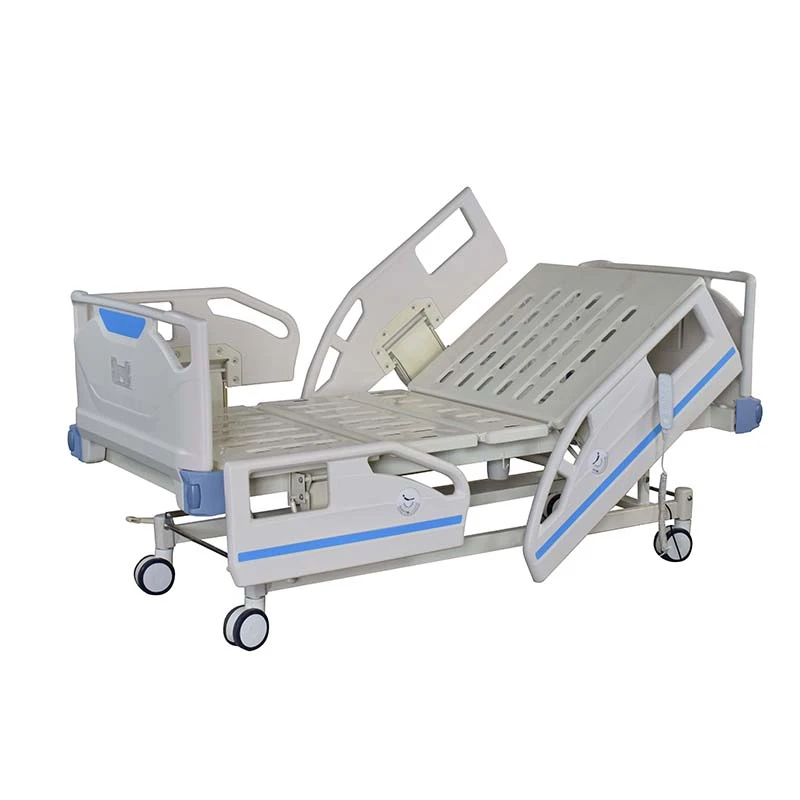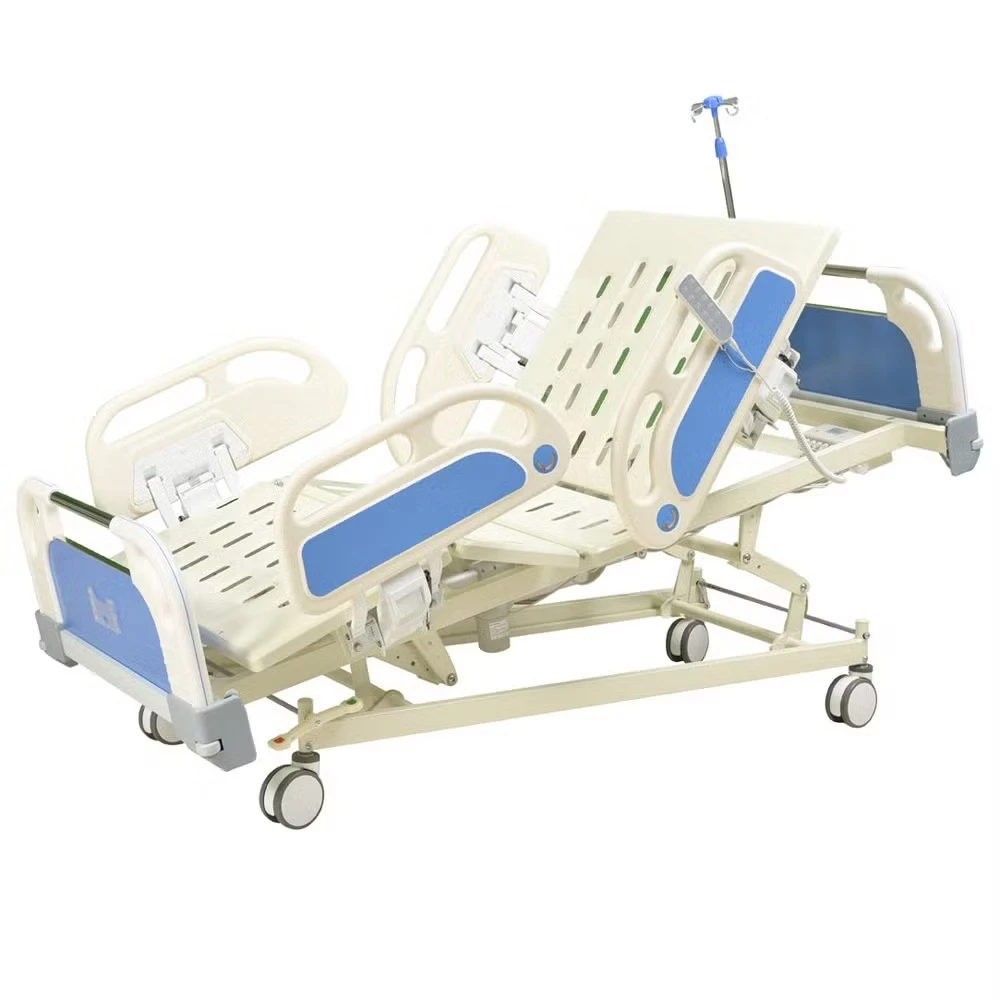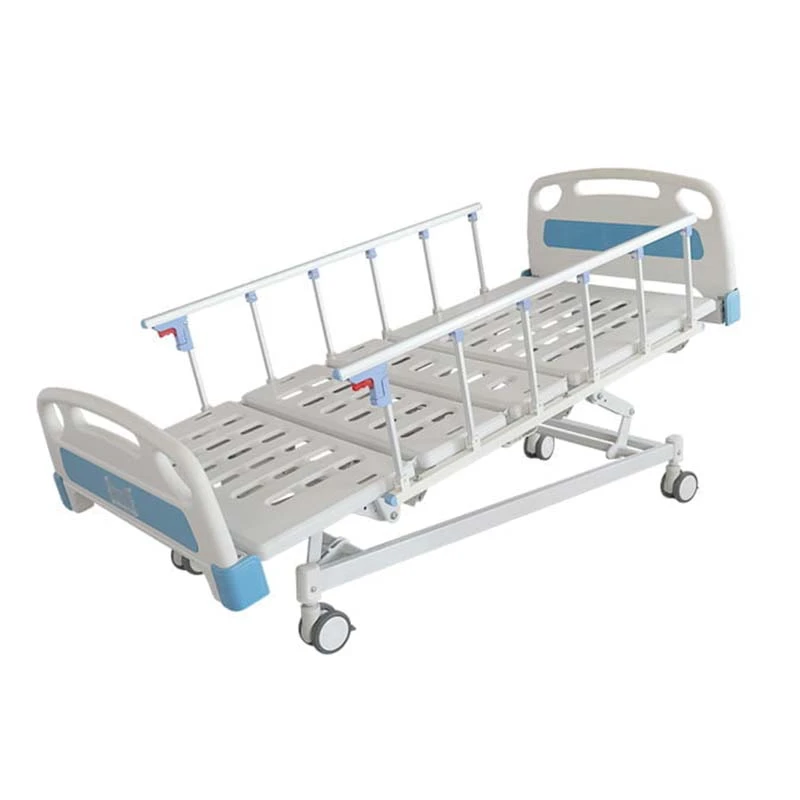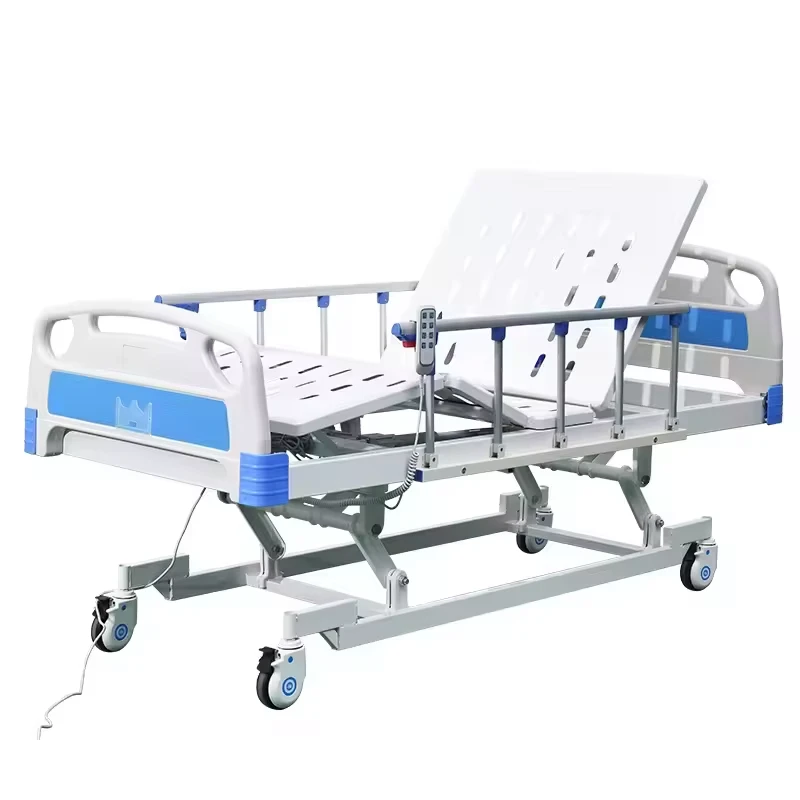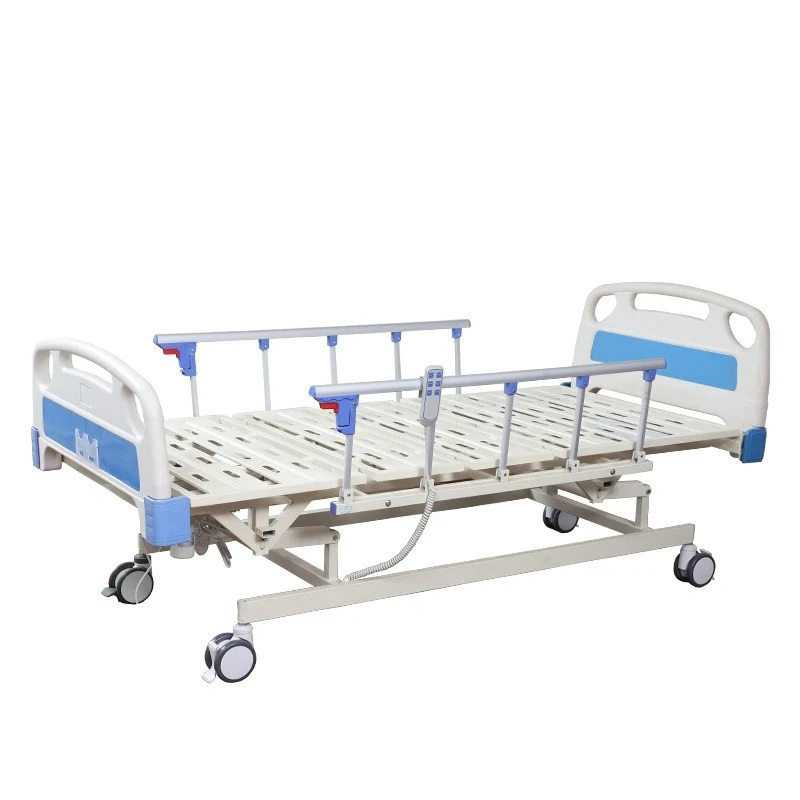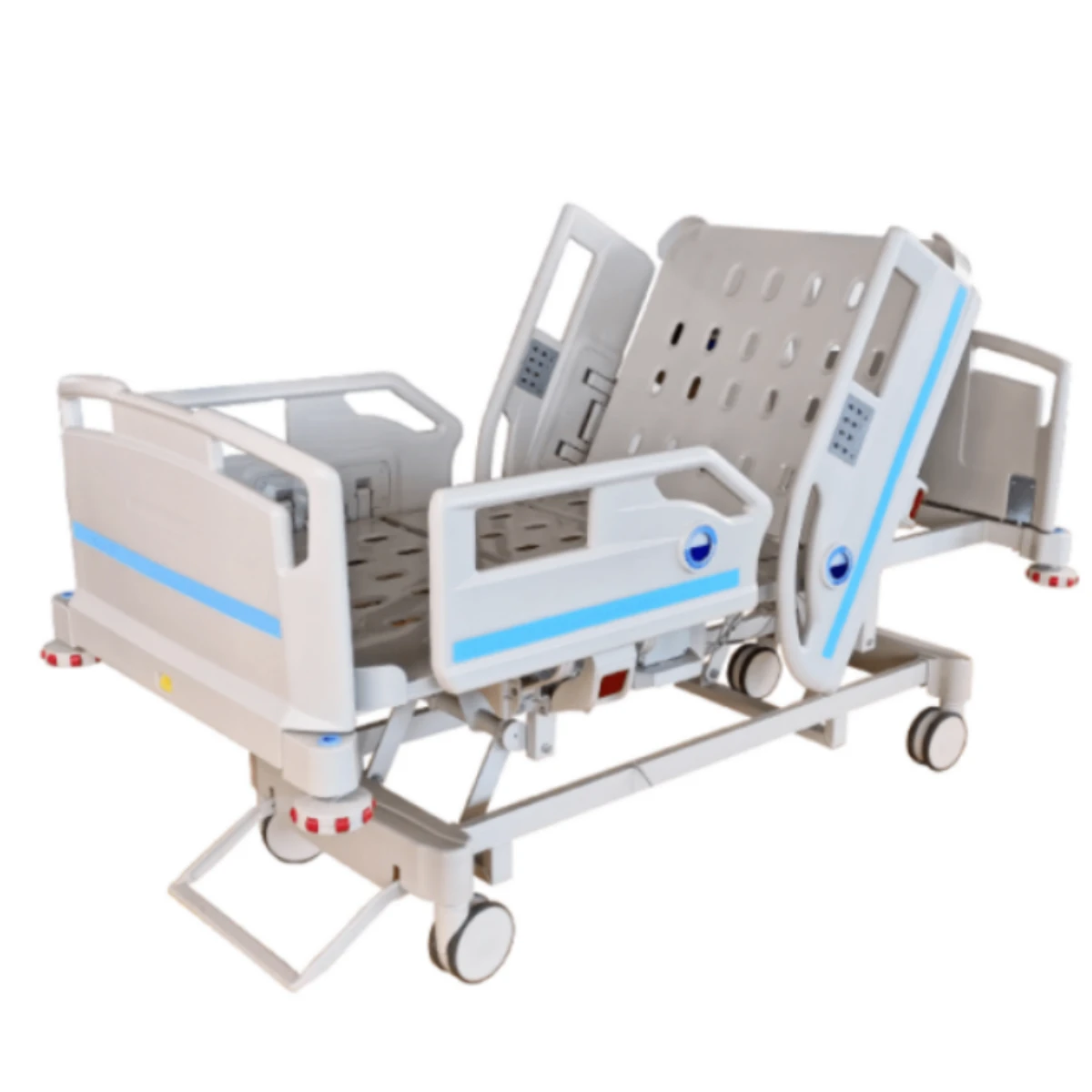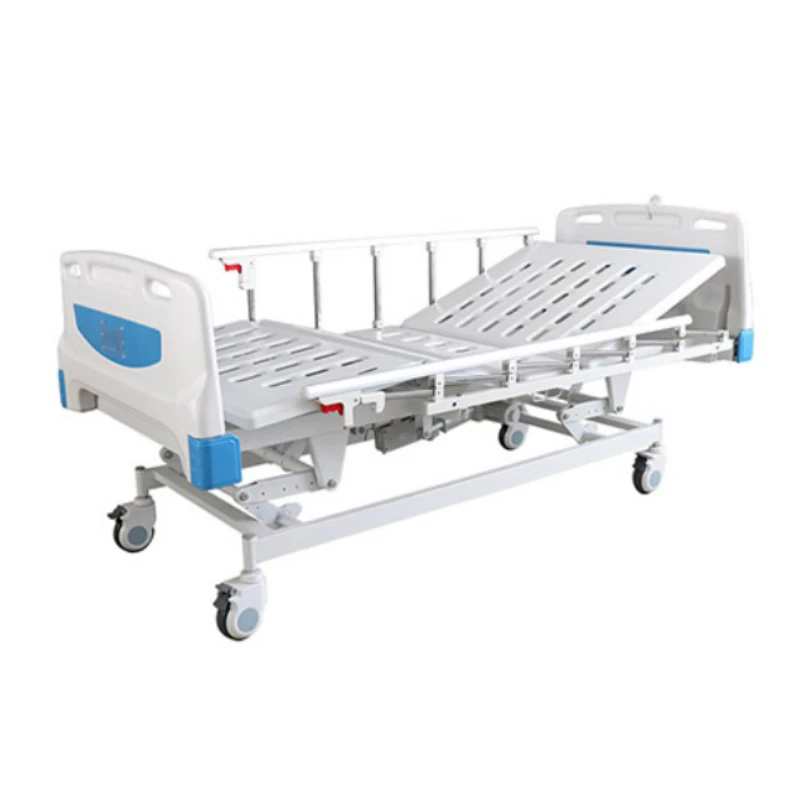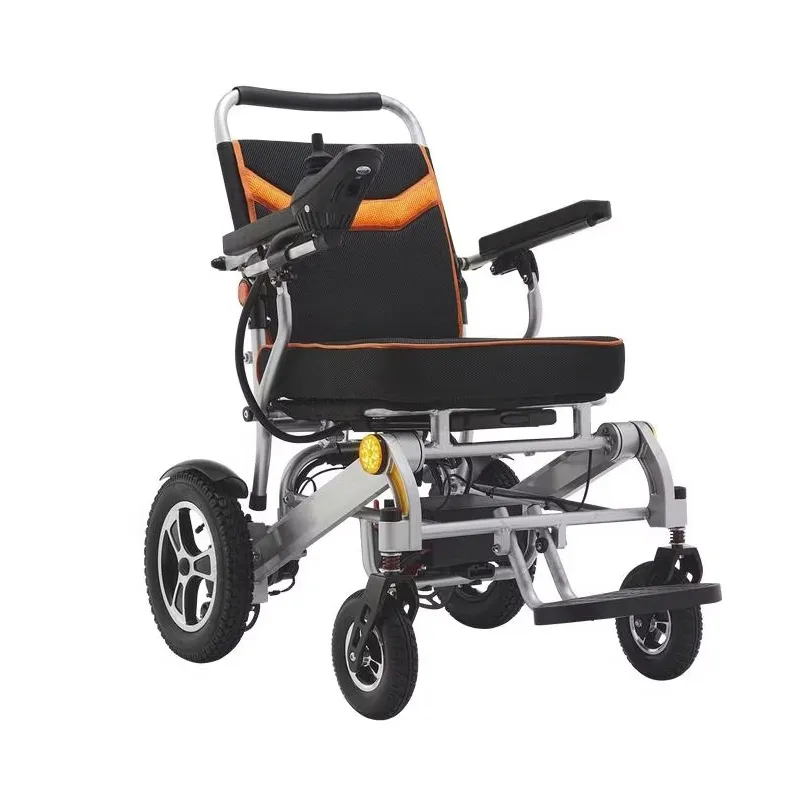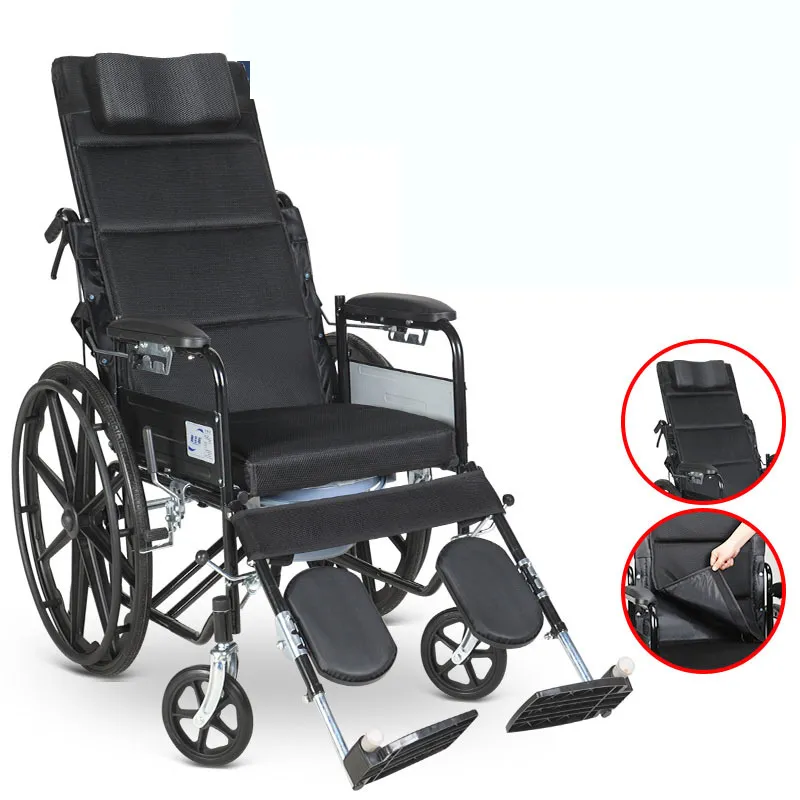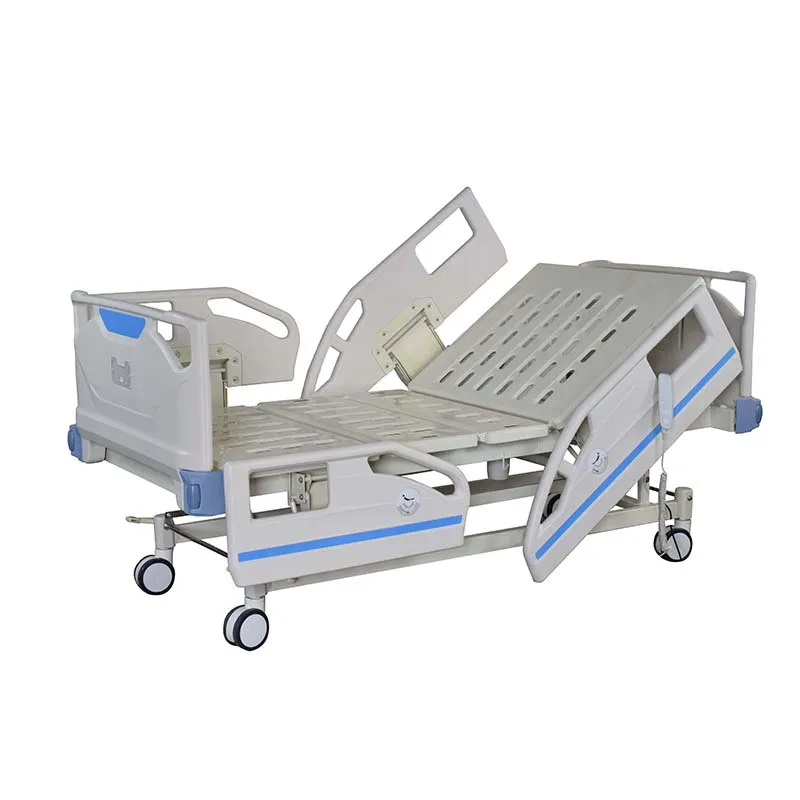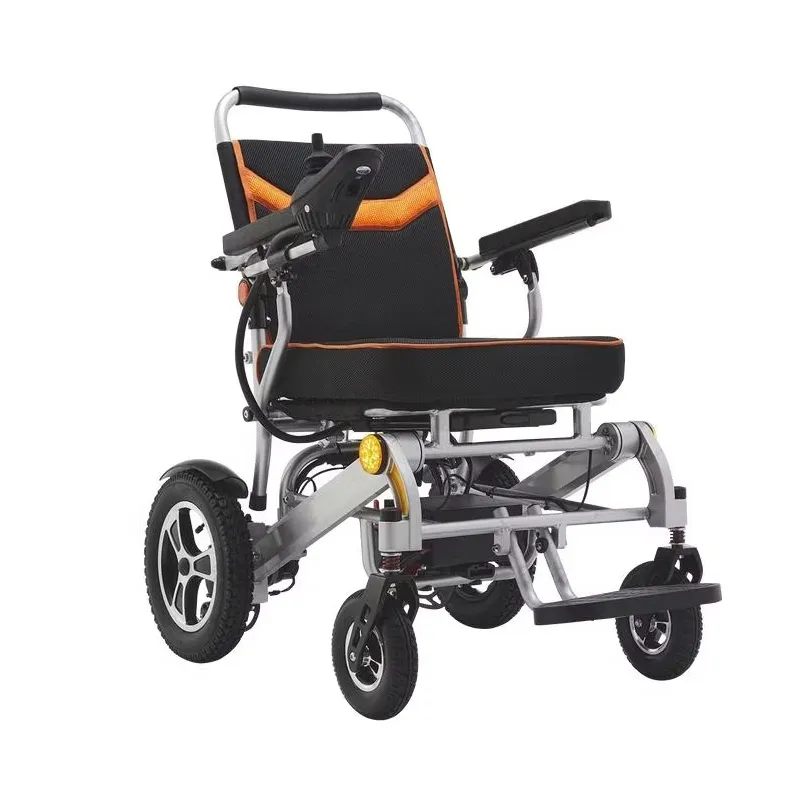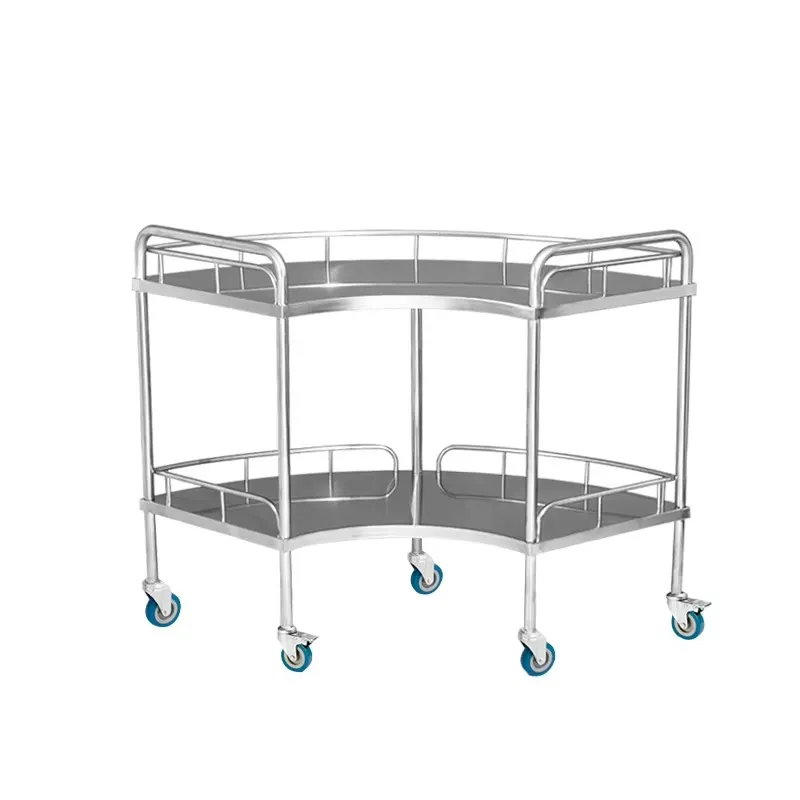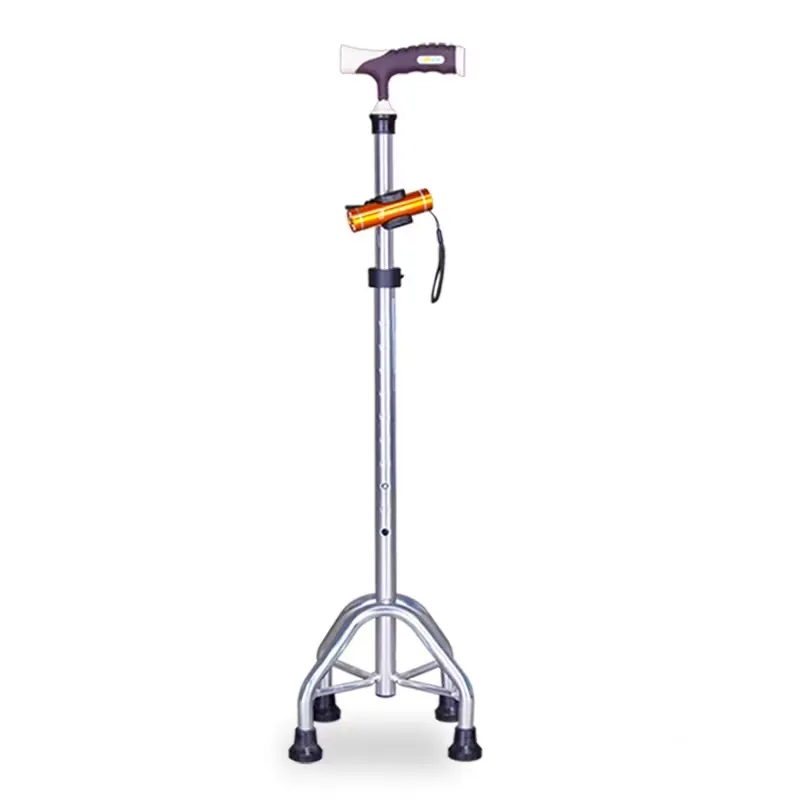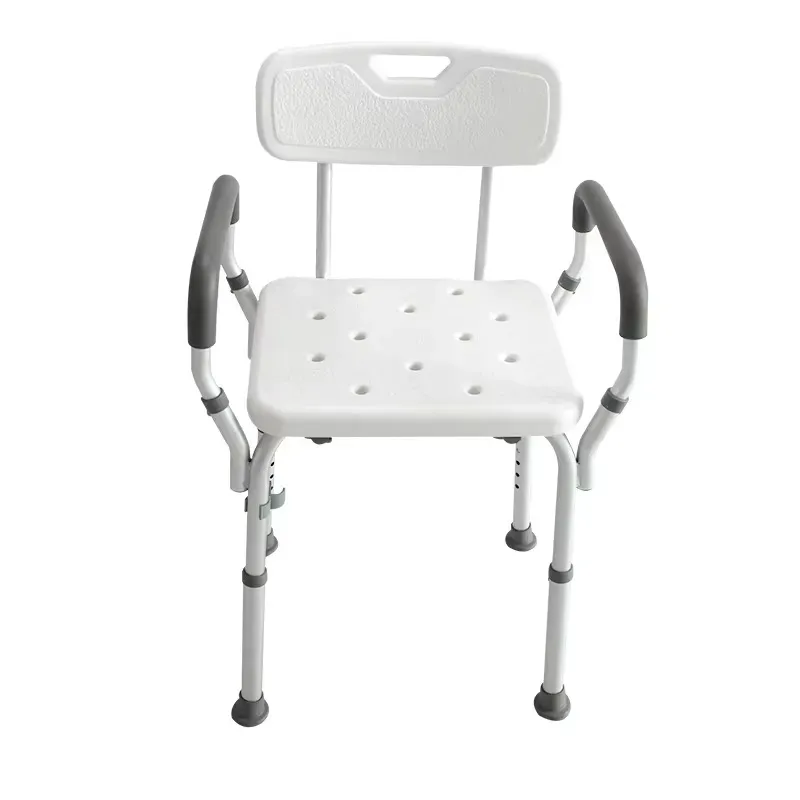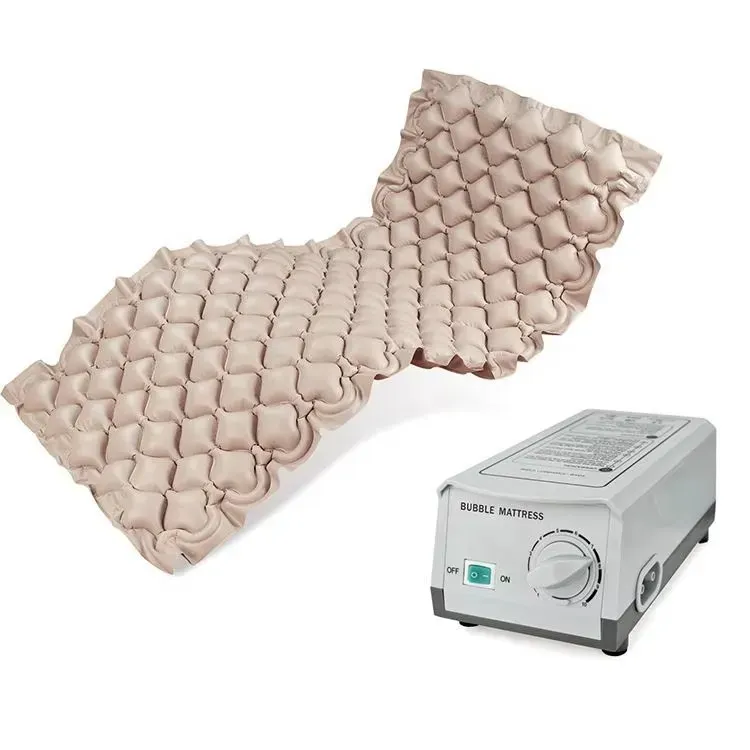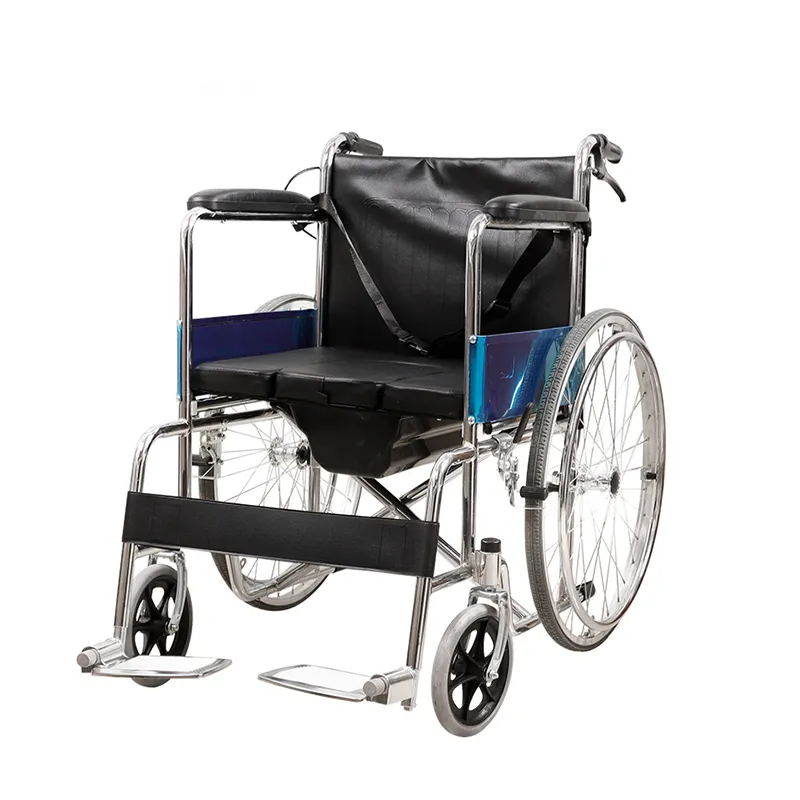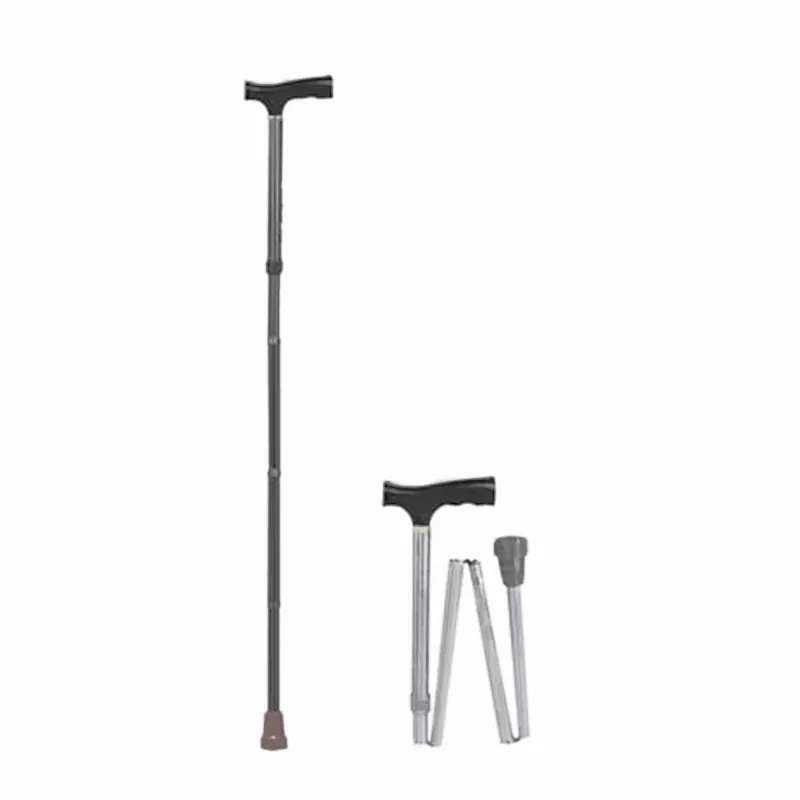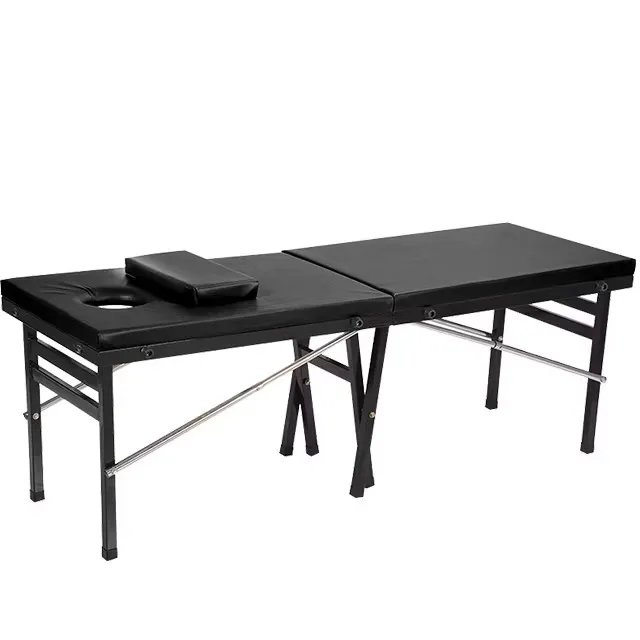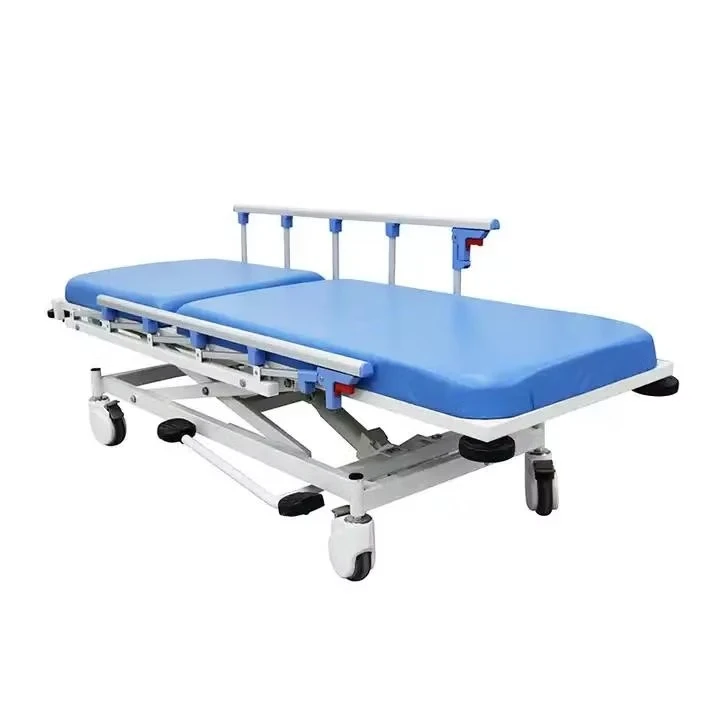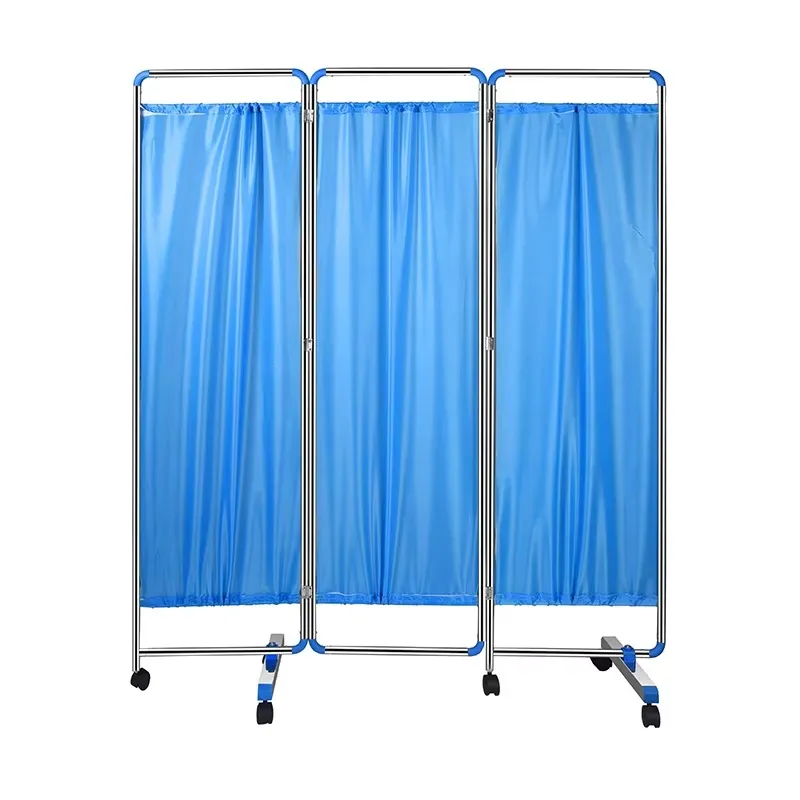Durable Medical Stretchers for Sale - Quality & Price
In the dynamic landscape of modern healthcare, the efficient and safe transport of patients is paramount. At the heart of this critical operation lies the medical stretcher, a fundamental piece of equipment that has evolved significantly from its rudimentary origins. Far more than just a bed on wheels, today's medical stretcher embodies a sophisticated blend of engineering, ergonomics, and advanced materials designed to ensure patient comfort, safety, and rapid mobility in various demanding environments. This comprehensive guide will explore the pivotal role of the medical stretcher, delving into industry trends, technical specifications, manufacturing processes, application scenarios, and the critical factors that define a superior product.
Current Industry Trends Shaping the Future of Medical Stretchers
The global medical stretcher market is experiencing robust growth, driven by an aging population, increasing incidence of chronic diseases, a surge in emergency medical services (EMS) calls, and continuous technological advancements in healthcare infrastructure. According to a report by Grand View Research, the global patient transport equipment market size was valued at USD 14.5 billion in 2022 and is projected to grow at a compound annual growth rate (CAGR) of 6.5% from 2023 to 2030. This growth underscores the increasing demand for specialized, high-quality patient mobility solutions.
Key trends influencing the design and adoption of medical stretcher technology include:
- Enhanced Ergonomics and Patient Comfort: Modern medical stretcher designs prioritize patient dignity and comfort, incorporating features like adjustable backrests, leg rests, trendelenburg and reverse trendelenburg positions, and pressure-relieving mattresses to minimize pressure ulcers during extended transport.
- Improved Maneuverability and Safety: Advanced braking systems, larger swivel casters, fifth-wheel steering, and lighter but stronger materials contribute to easier navigation through crowded hospital corridors and challenging pre-hospital environments, reducing strain on caregivers and enhancing patient safety.
- Integration of Smart Technologies: While still nascent, some high-end medical stretcher models are exploring integration with patient monitoring systems, weight sensors, and even GPS for asset tracking within large medical facilities.
- Specialized Applications: There's a growing demand for specialized medical stretcher solutions tailored for specific needs, such as bariatric patients, pediatric transport, MRI-compatible stretchers, and convertible medical stretcher bed units for multi-purpose use.
- Infection Control: Materials and designs that facilitate easy cleaning and disinfection are becoming standard, crucial for preventing hospital-acquired infections (HAIs). Smooth surfaces, removable pads, and antimicrobial coatings are increasingly common.
Technical Parameters and Specifications of a High-Performance Medical Stretcher
When considering a medical stretcher for sale, understanding its technical parameters is crucial. These specifications directly impact its suitability for different medical environments and patient needs. Our featured product, the High Quality Hospital Outpatient Transport Vehicle, exemplifies many of these advanced features. Here's a general overview of key parameters:
Medical Stretcher Key Specifications Comparison
| Parameter | Standard Transport Stretcher | Emergency/Ambulance Stretcher | High Quality Hospital Outpatient Transport Vehicle (Example) | Bariatric Stretcher |
|---|---|---|---|---|
| Dimensions (LxWxH) | ~190-210cm x 60-75cm x 50-90cm | ~190-210cm x 55-65cm x 25-90cm (Adjustable Height) | ~210cm x 75cm x (Adjustable 50-90cm) | ~210-220cm x 90-110cm x 50-90cm |
| Weight Capacity (Max Load) | 150-200 kg (330-440 lbs) | 200-250 kg (440-550 lbs) | 250 kg (550 lbs) | 300-500+ kg (660-1100+ lbs) |
| Material | Aluminum alloy, Steel, ABS plastic, PU mattress | High-strength aluminum alloy, Stainless steel, PVC/ABS/HDPE | Premium aluminum alloy, Stainless steel, Medical-grade PU, ABS | Reinforced steel, Aluminum alloy, Heavy-duty polymers |
| Wheel Diameter | 12.5-15 cm (5-6 inches) | 15-20 cm (6-8 inches) | 20 cm (8 inches) with central locking | 20-30 cm (8-12 inches) with heavy-duty casters |
| Adjustments | Manual height, backrest | Manual/Hydraulic/Pneumatic height, Trendelenburg, CPR position | Hydraulic height, backrest, leg rest, Trendelenburg, Reverse Trendelenburg | Hydraulic/Electric height, wide range of positions |
| Key Features | Side rails, IV pole, Locking wheels | Foldable legs, Load assist system, Restraints, Oxygen tank holder | Central brake system, Collapsible side rails, IV pole, Storage basket, Retractable push handles | Reinforced frame, Wide surface area, Dedicated restraints, Powered adjustments |
| Target Application | General hospital transport | Ambulance, EMS, Emergency Department | Hospital outpatient, ER, Inter-departmental transfer | Bariatric patient transport |
Our featured product, the High Quality Hospital Outpatient Transport Vehicle, excels in its robust construction and versatile features. With a high load capacity of 250 kg (550 lbs), it is designed to safely accommodate a wide range of patients. Its hydraulic height adjustment, multiple position settings (including Trendelenburg and Reverse Trendelenburg), and central braking system significantly enhance its utility and ease of use in fast-paced medical environments. These features are critical for rapid patient assessment and intervention, making it a highly sought-after medical stretcher for sale in modern hospitals.
Applications and Scenarios for Medical Stretchers
The versatility of the medical stretcher allows its deployment across a myriad of healthcare and emergency settings. Its application is not limited to just one department; rather, it serves as a crucial link in the chain of patient care, from initial emergency response to inter-departmental transfers within a hospital.
Primary application scenarios include:
- Emergency Medical Services (EMS) and Ambulances: This is perhaps the most well-known application, where robust, quick-deploying stretchers are essential for pre-hospital care, rapid extrication, and transport to a medical facility. Ambulance stretchers often feature advanced loading systems to facilitate safe transfer into and out of the ambulance.
- Emergency Departments (EDs): Upon arrival, patients are often transferred from an ambulance stretcher to an ED medical stretcher for initial assessment, triage, and stabilization. These stretchers need to be highly maneuverable and compatible with various diagnostic equipment.
- Operating Rooms (ORs) and Recovery Rooms (PACU): Patients are transported to and from surgical suites on specialized stretchers that offer stability, ease of transfer to the operating table, and post-operative recovery features.
- Radiology and Diagnostic Imaging Centers: MRI, CT, and X-ray departments require stretchers that are easy to maneuver, radiolucent (allowing X-rays to pass through), and sometimes MRI-compatible (non-ferrous materials) to ensure patient safety and clear imaging results.
- Hospital Inpatient Departments: For inter-departmental transfers, such as moving a patient from their ward to a specialist clinic, physical therapy, or other diagnostic areas. The High Quality Hospital Outpatient Transport Vehicle is specifically designed for these types of intra-hospital transports, emphasizing smooth transitions and patient comfort.
- Outpatient Clinics and Surgery Centers: Used for patients undergoing minor procedures or consultations, where a comfortable and easily adjustable medical stretcher bed is required for short-term patient occupancy.
- Military Field Hospitals & Disaster Relief: Robust, often collapsible, and easily transportable stretchers are vital for providing immediate medical aid in austere or disaster-stricken environments.
In all these scenarios, the medical stretcher acts as a crucial interface, ensuring seamless transitions while prioritizing patient well-being. Its design directly impacts operational efficiency and the overall patient experience.
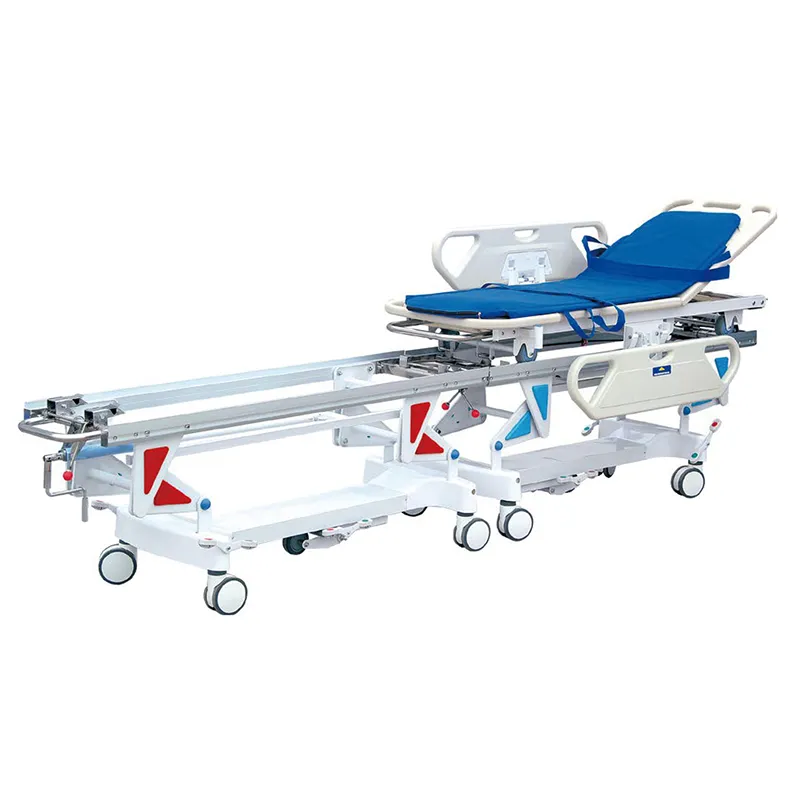
The Craft of Excellence: Manufacturing Process of a Medical Stretcher
The creation of a high-quality medical stretcher is a meticulous process that combines material science, precision engineering, and rigorous quality control. It's a testament to the dedication required to produce medical devices that are both safe and reliable. The manufacturing process for a product like the High Quality Hospital Outpatient Transport Vehicle can be broadly broken down into several critical stages:
1. Material Selection and Preparation
The foundation of a durable and functional medical stretcher lies in its materials. Common choices include:
- Aluminum Alloy: Often used for the main frame due to its high strength-to-weight ratio, excellent corrosion resistance, and ease of fabrication. Specific grades are chosen based on load-bearing requirements and fatigue resistance.
- Stainless Steel: Employed for critical load-bearing components, fasteners, and surfaces requiring superior hygiene and corrosion resistance. Its non-porous nature makes it ideal for medical environments.
- ABS Plastic (Acrylonitrile Butadiene Styrene): Used for molded components like patient platforms, side rails, and covers due to its impact resistance, ease of cleaning, and aesthetic appeal.
- Polyurethane (PU) Foam: For mattresses and padding, selected for its pressure-relieving properties, durability, and often, its fluid-resistant and anti-microbial characteristics.
Material preparation involves cutting raw materials (e.g., aluminum tubing, steel sheets) to precise dimensions using CNC (Computer Numerical Control) laser cutting or sawing machines, ensuring minimal waste and high accuracy.
2. Frame Fabrication
This stage involves forming the skeletal structure of the medical stretcher. Techniques include:
- Bending and Forming: Aluminum and steel tubes are precisely bent using hydraulic or CNC tube bending machines to create the ergonomic curves and structural integrity of the frame.
- Welding: Expert welders use TIG (Tungsten Inert Gas) or MIG (Metal Inert Gas) welding processes to join frame components. For medical devices, welding quality is paramount, requiring strong, clean, and consistent seams to prevent structural failure. Post-weld inspection ensures integrity.
- Machining (CNC): Critical parts requiring high precision, such as locking mechanisms, pivot points, and specialized connectors, are often machined using multi-axis CNC milling and turning centers. This ensures tight tolerances and smooth operation.
3. Surface Treatment and Finishing
To enhance durability, corrosion resistance, and aesthetics, frames typically undergo surface treatment:
- Pre-treatment: Cleaning, degreasing, and etching prepares the metal surface for coating, ensuring strong adhesion.
- Powder Coating: A dry powder (polyester or epoxy-based) is electrostatically applied and then cured under heat, forming a hard, durable finish that is resistant to scratches, chemicals, and corrosion. This finish is also easier to clean and disinfect, vital for a medical stretcher.
4. Component Assembly
This is where the various manufactured and procured components come together:
- Caster and Wheel Installation: High-quality casters (wheels) with specific features like central locking systems, directional locks, and non-marking rubber are installed.
- Actuator Integration: Hydraulic or pneumatic cylinders for height adjustment and position changes are integrated and connected to control mechanisms.
- Side Rail and Mattress Installation: Collapsible side rails, IV poles, and the patient mattress are fitted securely.
- Accessory Attachment: Any additional accessories like oxygen tank holders, storage baskets, or patient restraints are added.
5. Rigorous Quality Control and Testing
This is arguably the most critical phase for any medical stretcher, ensuring it meets stringent industry standards and performs reliably under pressure. Our products adhere to the highest global standards:
- ISO 13485 Certification: This international standard specifies requirements for a quality management system where an organization needs to demonstrate its ability to provide medical devices and related services that consistently meet customer and regulatory requirements. Adherence to ISO 13485 is a hallmark of quality in medical device manufacturing.
- ANSI/AAMI Standards: Compliance with American National Standards Institute (ANSI) and Association for the Advancement of Medical Instrumentation (AAMI) standards ensures the device meets specific safety and performance criteria for medical electrical equipment and patient care devices.
- Dynamic Load Testing: Stretchers are subjected to repeated loading and unloading cycles, often exceeding their stated weight capacity, to simulate real-world usage and test structural integrity and fatigue resistance.
- Drop Testing: To ensure components can withstand impacts during transport.
- Brake Performance Testing: Verifying that locking mechanisms and brakes are fully effective and reliable.
- Cleanability and Disinfection Testing: Assessing how easily the stretcher can be cleaned and disinfected according to healthcare protocols.
- Functional Testing: Every feature, from height adjustment to Trendelenburg positions, is tested for smooth and reliable operation.
- Visual Inspection: A final thorough inspection for any cosmetic flaws, sharp edges, or assembly errors.
The lifespan of a well-manufactured medical stretcher can be 7-10 years or more, depending on usage intensity, maintenance, and the initial build quality. Regular maintenance and adherence to cleaning protocols are crucial for maximizing this lifespan. The medical stretcher bed is designed for high-frequency use in demanding environments.
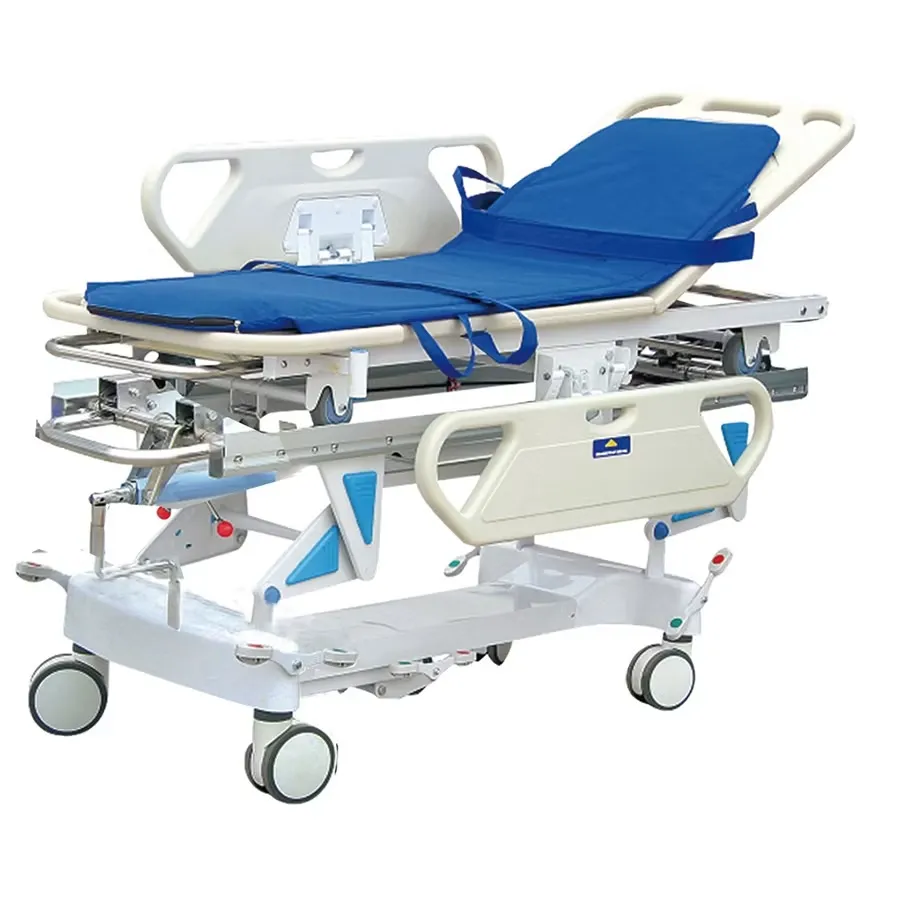
Technical Advantages of Our High Quality Hospital Outpatient Transport Vehicle
Our featured product, the High Quality Hospital Outpatient Transport Vehicle, is engineered to provide superior performance, emphasizing patient comfort, caregiver efficiency, and long-term durability. Here are its distinct technical advantages:
- Ergonomic Patient Handling: Equipped with a hydraulic lift system that allows for smooth and effortless height adjustment from 50cm to 90cm. This reduces the physical strain on medical staff during patient transfer and examination, preventing common back injuries. The integrated gas spring mechanism for backrest and leg rest adjustment further ensures optimal patient positioning for various medical procedures or comfort during transport.
- Robust Construction and Material Excellence: Constructed from high-strength aluminum alloy and premium stainless steel, ensuring exceptional durability and stability. The patient platform is made from medical-grade ABS, which is easy to clean, impact-resistant, and non-toxic. This robust build contributes to a superior medical stretcher with an extended service life.
- Advanced Mobility and Control: Features 8-inch (20cm) silent, anti-wrap casters with a central locking system. This innovative braking mechanism allows all four wheels to be locked or unlocked simultaneously with a single foot pedal, providing superior control and stability during transfers or when stationary. The inclusion of a fifth-wheel steering system (often an option or integrated feature in high-end models) further enhances maneuverability in tight spaces.
- Safety-Centric Design: Incorporates foldable side rails with a secure locking mechanism, preventing accidental patient falls while allowing for quick access. Integrated IV pole sockets and an extendable IV pole provide convenience. Patient restraint straps (optional or standard) further secure the patient during transport.
- Infection Control Optimization: All surfaces are designed to be smooth, non-porous, and easily accessible for cleaning and disinfection, crucial for maintaining a sterile environment and preventing the spread of pathogens. The mattress, typically made of fluid-resistant PU, can be easily removed for thorough cleaning.
- Versatile Positioning: Beyond standard height and backrest adjustments, it offers Trendelenburg and Reverse Trendelenburg positions, vital for managing specific medical conditions, improving circulation, or aiding in respiratory care. This versatility transforms it from a mere transport device into a functional medical stretcher bed.
These advantages collectively result in a medical stretcher that not only meets but often exceeds industry expectations for safety, performance, and longevity, providing excellent value for its medical stretcher price.
Manufacturer Comparison and What Sets Us Apart
The market for medical stretcher solutions is competitive, with numerous manufacturers offering a range of products. While many companies produce functional stretchers, not all prioritize the same level of quality, innovation, and long-term support. When evaluating a medical stretcher for sale, considering the manufacturer's reputation, quality control processes, and after-sales service is as crucial as the product specifications itself.
Here’s a general comparison framework:
| Feature/Category | Standard Manufacturer (General) | Premium Manufacturer (e.g., Zhaofa Med) |
|---|---|---|
| Material Quality | Standard steel/aluminum, basic plastics | High-grade aerospace aluminum alloys, surgical stainless steel, medical-grade polymers (e.g., virgin ABS/HDPE) |
| Manufacturing Process | Basic welding, manual assembly, limited QC points | Precision CNC machining, robotic/TIG welding, multi-stage automated and manual QC, ISO 13485 certified processes |
| Innovation & R&D | Follows industry trends, incremental improvements | Proactive R&D, patent development, integration of advanced ergonomics, smart features, and patient safety innovations. Continuous improvement cycle. |
| Certifications | Local certifications, CE (basic) | ISO 9001, ISO 13485 (Medical Devices), CE, FDA (where applicable), specific country-level medical device approvals. Comprehensive compliance. |
| Durability & Lifespan | Average 3-5 years under heavy use | 7-10+ years under heavy use, designed for extreme longevity |
| After-Sales Support | Basic warranty, limited spare parts availability | Extended warranties, comprehensive spare parts inventory, dedicated technical support, preventative maintenance programs, rapid response. |
| Customization Options | Limited or no customization | Extensive customization for specific clinical needs, branding, and facility requirements (e.g., specific colors, accessories, dimensions). |
| Total Cost of Ownership (TCO) | Lower initial medical stretcher price, higher long-term maintenance/replacement costs. | Higher initial medical stretcher price, significantly lower long-term TCO due to durability, lower maintenance, and extended lifespan. |
As Zhaofa Med, our commitment extends beyond merely selling a medical stretcher. We pride ourselves on embodying the 'Premium Manufacturer' category. Our High Quality Hospital Outpatient Transport Vehicle is a direct reflection of this philosophy. We invest heavily in research and development to incorporate the latest ergonomic principles and safety features. Our manufacturing facility adheres strictly to ISO 13485 standards, ensuring every unit undergoes rigorous testing beyond the industry norm. This dedication to quality and our comprehensive after-sales support system is why hospitals and clinics choose our medical stretcher solutions for their critical patient transport needs. We understand that a medical stretcher price is an investment, and we strive to ensure that investment yields maximum returns in terms of patient safety, caregiver efficiency, and product longevity.
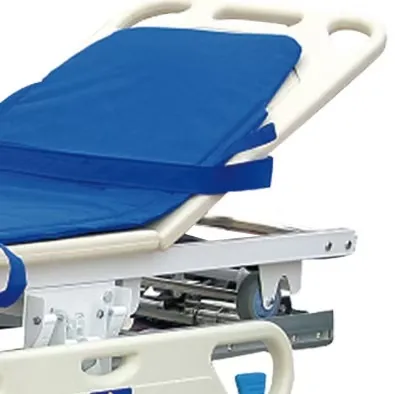
Customization Solutions for Specific Healthcare Needs
While standard medical stretcher models serve a broad range of applications, modern healthcare facilities often have unique requirements driven by patient demographics, specialized departments, or space constraints. Recognizing this, leading manufacturers offer robust customization solutions to tailor the medical stretcher to precise needs. This ensures optimal functionality, improved workflow, and enhanced patient and caregiver satisfaction.
Our approach to customization for the High Quality Hospital Outpatient Transport Vehicle and other models includes:
- Dimension Modifications: For facilities with narrow corridors, smaller elevators, or specific room layouts, we can adjust the overall length and width of the medical stretcher to ensure unhindered mobility without compromising stability or patient space. Conversely, for specialized bariatric units, we can provide wider and reinforced medical stretcher bed options.
- Material and Finish Choices: While our standard materials are top-tier, specific requests for antimicrobial coatings, unique color schemes to match hospital branding, or even specific grades of stainless steel for highly corrosive environments (e.g., certain sterilization areas) can be accommodated.
- Accessory Integration: Beyond standard IV poles and oxygen tank holders, customization can include:
- Integrated patient monitors mounts or power outlets.
- Specialized restraint systems for agitated or pediatric patients.
- Additional storage compartments or utility hooks.
- Customized mattress options (e.g., advanced pressure redistribution, heated mattresses).
- Wheel and Caster Configuration: Depending on the primary usage environment, specialized casters can be fitted – for instance, larger wheels for rougher outdoor terrains (for field hospitals), or anti-static wheels for environments with sensitive electronic equipment.
- Patient Positioning Enhancements: While our standard models offer versatile positioning, specific clinical needs might require additional articulation points or specialized power-assist features for easier manipulation of patient positions.
- Branding and Labeling: Incorporating hospital logos, specific department identifiers, or serial numbering systems directly onto the medical stretcher for asset management and branding purposes.
The ability to provide customized solutions reflects a manufacturer's deep understanding of clinical workflows and commitment to meeting diverse customer needs. It ensures that the investment in a medical stretcher price is maximized by acquiring a product perfectly suited to its intended application, leading to better patient outcomes and increased operational efficiency.
Real-World Application Cases & Customer Success Stories
The true measure of a medical stretcher's quality and effectiveness lies in its performance in real-world scenarios. Our High Quality Hospital Outpatient Transport Vehicle has been instrumental in enhancing patient care and operational efficiency across various medical institutions.
Case Study 1: Large Urban Medical Center - Streamlining Inter-Departmental Transfers
A leading 1000-bed urban medical center faced challenges with slow patient transfers between its Emergency Department, Radiology, and various inpatient units. Their existing stretchers were heavy, difficult to maneuver, and lacked consistent braking systems, leading to delays and increased staff fatigue. After evaluating several options, they invested in 50 units of our High Quality Hospital Outpatient Transport Vehicle. The central braking system significantly reduced transfer times and improved safety during transitions. The ergonomic hydraulic lift minimized strain on nurses and transport staff. Within six months, the hospital reported a 15% reduction in average patient transfer times and a noticeable decrease in staff-reported musculoskeletal injuries related to patient handling. This investment, though initially a consideration for its medical stretcher price, proved highly cost-effective through improved efficiency and reduced worker's compensation claims.
Case Study 2: Private Outpatient Surgery Clinic - Enhancing Patient Experience
A boutique outpatient surgery clinic specializing in minor orthopedic procedures sought to upgrade its patient transport experience. They required a medical stretcher bed that offered exceptional comfort, easy adjustability for pre-operative positioning, and a sleek, non-clinical aesthetic. Our medical stretcher with its high-density PU mattress and smooth hydraulic adjustments proved to be the ideal fit. Patients consistently provided positive feedback on the comfort and ease of transfer. The clinic noted that the professional appearance and quiet operation of the stretchers contributed positively to their overall patient satisfaction scores, reinforcing their brand image of high-quality care.
Case Study 3: Emergency Response Team - Durability in Demanding Conditions
A regional emergency medical response team needed robust and reliable stretchers that could withstand frequent outdoor use and rapid deployment. Their old units were showing signs of wear quickly. They opted for our medical stretcher due to its high-strength aluminum alloy frame and durable powder coating. After a year of intense use, including deployment in adverse weather conditions, the stretchers maintained their structural integrity and smooth operation, proving their resilience. The team commended the ease of cleaning and disinfection after transporting patients in various environments, highlighting its contribution to infection control protocols even in challenging pre-hospital settings.
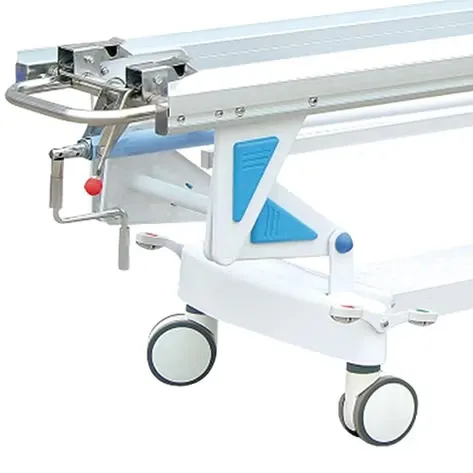
Frequently Asked Questions (FAQ) about Medical Stretchers
Here are some common questions regarding the features, maintenance, and usage of a medical stretcher:
- Q1: What materials are typically used in the construction of a high-quality medical stretcher?
- A: High-quality medical stretchers, like our High Quality Hospital Outpatient Transport Vehicle, primarily utilize high-strength aluminum alloys for the main frame due to their lightweight yet robust properties. Stainless steel is often used for critical components and fasteners for enhanced durability and corrosion resistance. Patient platforms are typically made from medical-grade ABS plastic, known for its easy cleaning and impact resistance. Mattresses are commonly made from fluid-resistant, pressure-relieving polyurethane (PU) foam.
- Q2: What is the average weight capacity of a medical stretcher, and are there options for bariatric patients?
- A: Standard medical stretcher models typically have a weight capacity ranging from 150 kg to 250 kg (330-550 lbs). Yes, for bariatric patients, specialized bariatric stretchers are available with reinforced frames and wider surfaces, capable of safely supporting weights from 300 kg to over 500 kg (660-1100+ lbs). Our featured product safely accommodates up to 250 kg.
- Q3: How important is the wheel system on a medical stretcher? What features should I look for?
- A: The wheel system is critically important for maneuverability and safety. Look for large-diameter (e.g., 8-inch or 20cm) swivel casters for easy navigation. A central braking system is highly recommended, allowing all wheels to be locked simultaneously with a single foot pedal for maximum stability during transfers or when stationary. Some advanced models also include a fifth-wheel steering system for enhanced directional control in tight spaces. Quality wheels should be silent, anti-wrap, and non-marking.
- Q4: What is Trendelenburg and Reverse Trendelenburg positioning, and why are they important on a medical stretcher?
- A: Trendelenburg position involves tilting the entire medical stretcher bed so the patient's head is lower than their feet. Reverse Trendelenburg is the opposite, with the head higher than the feet. These positions are crucial for various medical interventions: Trendelenburg can aid in managing hypotension (low blood pressure) or certain surgical procedures, while Reverse Trendelenburg is useful for reducing intracranial pressure, managing reflux, or facilitating respiratory function. Their inclusion significantly increases the versatility and utility of the medical stretcher.
- Q5: What certifications should I look for when purchasing a medical stretcher?
- A: For international quality assurance, look for ISO 13485 certification, which is the international standard for quality management systems specific to medical devices. Other important certifications include CE marking for products sold in the European Economic Area, and FDA clearance for the US market. These certifications indicate that the manufacturer adheres to strict quality and safety standards throughout design, production, and after-sales service.
- Q6: How often should a medical stretcher be cleaned and disinfected? What's the best practice?
- A: A medical stretcher should be cleaned and disinfected thoroughly after each patient use to prevent cross-contamination and the spread of healthcare-associated infections (HAIs). Best practice involves using hospital-grade disinfectants compatible with the stretcher's materials (e.g., quaternary ammonium compounds, diluted bleach solutions). All surfaces, including frame, side rails, wheels, and mattress, should be wiped down. Removable components, like mattress pads, should be disinfected or laundered according to guidelines. Regular comprehensive cleaning protocols should be established and adhered to.
- Q7: What is the typical delivery cycle for a large order of medical stretchers, and what kind of warranty can I expect?
- A: The delivery cycle for a large order can vary based on quantity, customization requirements, and current production schedules, typically ranging from 4-8 weeks. It's best to confirm this with the supplier directly. For warranty, our High Quality Hospital Outpatient Transport Vehicle comes with a comprehensive 2-year warranty on structural components and a 1-year warranty on wear parts (e.g., casters, hydraulic pump seals). We also offer extended warranty options and preventative maintenance contracts to ensure long-term performance and minimize downtime.
Reliability and Trustworthiness: Our Commitment to Customer Support
At Zhaofa Med, we understand that purchasing a medical stretcher is a significant investment in patient care infrastructure. Our commitment to trustworthiness is reflected not just in the quality of our products but also in our comprehensive customer support and transparent policies. When considering a medical stretcher for sale, knowing that you have reliable support post-purchase is as crucial as the product itself.
- Comprehensive Warranty: We stand behind the durability and performance of our High Quality Hospital Outpatient Transport Vehicle with a robust warranty. Our structural components are covered for 2 years, ensuring peace of mind regarding the frame and core stability. Wear parts, such as hydraulic pumps and casters, typically carry a 1-year warranty, reflecting their operational nature. This ensures that your investment is protected from manufacturing defects.
- Detailed Delivery Cycle Information: We provide clear and accurate estimates for delivery cycles at the time of order. For standard models, lead times are typically 2-4 weeks. For larger orders or customized solutions, the delivery cycle might extend to 4-8 weeks. We maintain transparent communication throughout the process, providing updates on production and shipping milestones to help you plan effectively.
- Dedicated Customer Support: Our team of knowledgeable professionals is available to assist you with any queries, from technical specifications and product selection to after-sales support and spare parts. We offer multi-channel support via phone, email, and online inquiry forms to ensure prompt responses.
- Spare Parts Availability: We maintain a comprehensive inventory of genuine spare parts for all our medical stretcher models. This ensures that in the rare event of a component failure, replacements are readily available, minimizing downtime and extending the operational life of your equipment.
- Installation & Training Support: While our medical stretcher models are designed for intuitive use, we can provide guidance on initial setup and offer training resources for your staff on optimal usage, maintenance, and safety protocols, ensuring they maximize the benefits of the equipment.
Our commitment to these pillars of support reinforces our position as a trusted partner in providing essential medical equipment, ensuring that the medical stretcher price you pay translates into long-term reliability and exceptional patient care.
Conclusion: The Enduring Value of a High-Quality Medical Stretcher
The medical stretcher, far from being a simple apparatus, is a vital and increasingly sophisticated tool in modern healthcare. Its evolution reflects the broader advancements in patient care, emphasizing safety, efficiency, and patient dignity. From its fundamental role in emergency services to its intricate functions within hospital departments as a versatile medical stretcher bed, its design and manufacturing demand precision, robust materials, and adherence to the highest international standards.
Investing in a high-quality medical stretcher, like the High Quality Hospital Outpatient Transport Vehicle, transcends the immediate medical stretcher price. It's an investment in reducing caregiver injuries, enhancing patient comfort and safety, improving operational workflows, and ultimately, elevating the overall quality of care. As healthcare continues to evolve, the demand for intelligently designed, durable, and versatile patient transport solutions will only grow, cementing the medical stretcher's irreplaceable status as the unseen backbone of patient mobility.
References & Further Reading:
For more in-depth insights into patient transport safety and medical device standards, consider the following:
- "Patient Safety in Transit: Current Challenges and Best Practices," by L. L. Smith and K. M. Johnson, Journal of Emergency Medical Services, Vol. 45, No. 3, March 2020. This article discusses the complexities of patient transport and the role of equipment in ensuring safety.
- "The Importance of Ergonomics in Patient Handling and Mobility," by A. R. Davis and P. J. Miller, Healthcare Ergonomics Review, Vol. 7, Issue 2, June 2019. This paper highlights the impact of ergonomic design on preventing caregiver injuries and improving patient comfort during transfer.
- World Health Organization (WHO) - Medical Devices Information: https://www.who.int/medical_devices/en/
- International Organization for Standardization (ISO) - ISO 13485 (Medical devices — Quality management systems — Requirements for regulatory purposes): https://www.iso.org/standard/59752.html



